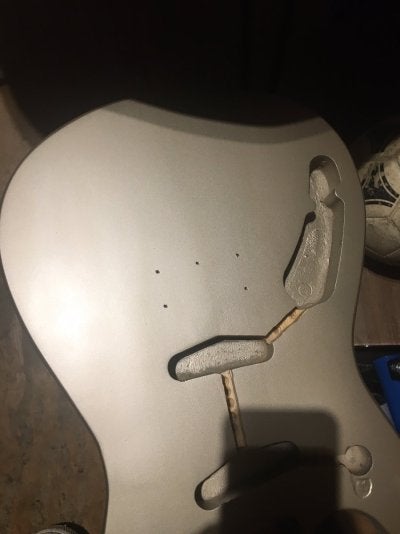I've finished this pine duosonic body with Duplicolor spray cans and the finish came out really good. After drying for over 2 weeks I started applying Watco clear lacquer semi-gloss spray can finish yesterday and the result has these awful lines as if some of the finish hasn't dried fully yet.
The humidity was about 55% yesterday and I sprayed the guitar outside. Is that humidity trapped into my clear coats or is something else causing this problem?
The humidity was about 55% yesterday and I sprayed the guitar outside. Is that humidity trapped into my clear coats or is something else causing this problem?



